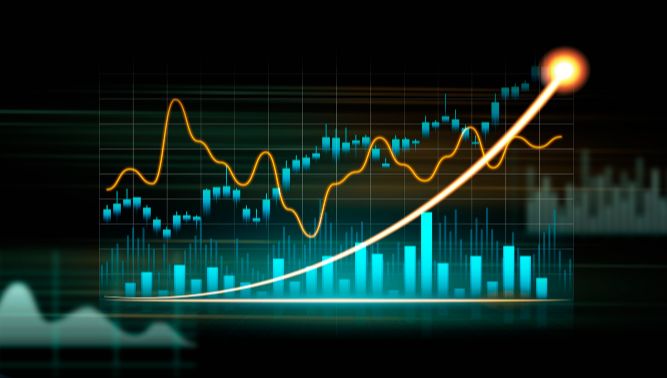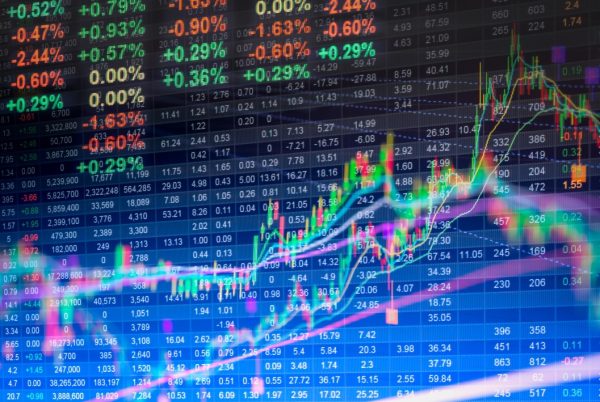Rhys Williams, CFA, Chief Strategist
January 3, 2024
“Well, isn’t that special?” This famous line from Saturday Night Live certainly describes the November/December “everything rally.” The fourth quarter can only be described as spectacular. Like Waiting for Godot, a play about two vagrants waiting for Godot who never comes, this market has been waiting for a recession for the better part of the last year and a half. No one expected that the US could beat inflation without causing unemployment to rise and an economic recession. While this may be the calm before the storm, the market is convinced that the US economy stuck the landing.
What do we have to credit for this good fortune? It wasn’t earnings; fourth-quarter earnings estimates declined almost 8% as topline pressures (due to less inflation) caused marginal headwinds. Europe and China decelerated during the fourth quarter, according to leading companies like Nike. Most companies that report earnings in the fourth quarter are easing down future earnings. Oracle, Adobe, Winnebago, Nike, Steelcase and FedEx all recently moved lower.
Interest rate declines powered markets higher, which caused the “everything rally.” Two months ago, when the 10-year US bond was at 5%, Jamie Dimon and many other experts debated if 6-7% would be the next stop. Interest rates quickly reversed and returned to sub-4% in a vicious about-face sparking one of the best bond rallies in history. Inflation declined to the upper 3% range, which is overstated as rent inflation is still listed at 6% in the November CPI report. Rent inflation does not measure the current month’s leases, but rather the last 12 months’ average as rents typically are for one year. This inflation measure lags reality by about 12 months. I believe CPI should be close to 2% by the end of the first quarter of 2024, perhaps even lower. Markets have sniffed this out and decided that maybe inflation was transitory after all.
The rate rally has driven a bid in unloved sectors at the expense of the Magnificent Seven and economically insensitive safe havens like UnitedHealthcare and Eli Lilly. The small cap market rose after two-plus years of disappointing relative performance. These companies are statistically cheap, both from an absolute and relative perspective. The all-clear signal from the bond market powered small cap stocks; a trend we believe continues. While we would have an overweight to small cap stocks, we would remain diversified. This trend depends on the perfect landing: no inflation and no recession. We think this is possible, but far from a certainty. Artificial intelligence (AI) may just be the balm that soothes our productivity challenges, allowing the economy and stock market to be positive in 2024.
The only other time the Federal Reserve (Fed) achieved a perfect landing after raising interest rates more than four times occurred in the mid-1990s. In 1994 and 1995, the markets were unsteady due to interest rate increases as Fed Chairman Alan Greenspan was concerned about the reemergence of inflation. The economy powered through those rate increases and was led by another technological leap that accelerated productivity, this time the ubiquity of client-server technology to allow networking. A small company named Cisco became a large company linking companies’ employees. Documents and projects could be shared for the first time, improving time to market and eliminating many secretarial roles. This allowed local jobs to become global at a fraction of the cost. Trade was a good word back then as politicians ran on Free Trade agreements. At the end of the decade, the internet was introduced. The 1990s was arguably the greatest period for low inflation but strong economic growth post-World War II. At the end of the era, the US government had a budget surplus, low inflation and booming growth. This was led by the productivity explosion from networking and the internet that benefited both top-line and margins.
We feel AI has a similar promise. Once these models reduce mistakes, which we believe will be in 2024, many white-collar jobs will become more efficient. For example, Google recently advanced after a report that AI sales tools in the advertising department allowed them to reduce sales professionals. If Google can write the same number of ads with fewer people, margins have the potential to increase. While the big tech giants are the nearest-term beneficiaries, every sector in the S&P 500 Index can use AI in the years ahead to enhance efficiency.
While the promise of a broadening stock market brings us much Christmas good cheer, we wouldn’t be prudent if we didn’t think about what could go wrong. Although we can only convey dismay regarding the events of October 7th, Israel has engaged in a conflict with a seemingly unattainable goal: the eradication of Hamas. The market believes Israel will accept lowering the threat posed by Hamas, however, more than 20,000 Palestinians have been killed to only reduce Hamas soldiers by 2,000. At this rate, achieving the elimination of 40,000 Hamas soldiers would require sacrificing 400,000 Palestinians and we do not see how to accomplish this without widening the war.
It is unclear Iran’s intentions with Hezbollah and uncertain if Benjamin Netanyahu might welcome a chance to take out Iran when so much of the US fleet is in the region. After all, if there is a war, Netanyahu is Prime Minister. However, after the war, he will no longer have this title and may be imprisoned for his legal battles. The leader of Israel has every reason to keep this war going and has spent his life working against a two-state solution and to reduce Iran’s influence in the region. His personal interests and professional views are united and this war will not end anytime soon. This should give a bid to shipping rates and oil because the war could widen even if the US and Arab states do not desire this outcome. While this is a known risk, the stock market is not giving it much credence. We sincerely hope the market is right.
Inflation is transitorily falling and may start to pick up in the second half of 2024 due to energy, consumer goods and rent deflation becoming lapped. Healthcare and insurance rates will increase next year, as they seem to do every year. If the economy doesn’t receive the productivity boom from AI that we anticipate, this could cause inflation to start increasing. Markets may not react favorably to inflation going back over 3% by the end of 2024.
Monetary policy works with a 12 to 18-month lag. Jay Powell began raising rates only one year ago despite threatening to start 15 months ago. The market is spiking the ball without knowing if it’s reached the end zone. Every recession was preceded by a time when the market believed that the economy might power through. We may be collectively in a lull before the storm.
2024 is not only an election year for the US; 25 other countries are also staging leadership elections, commencing with Taiwan in January. If the Chinese opposition party wins re-election in Taiwan, tensions could rise in Asia. In the US, both parties are unlikely to campaign on market-friendly policies. Populism is increasingly triumphant globally, and the US is no exception. While Donald Trump campaigned on very pessimistic messaging in 2016, his economic team delivered market-friendly policies in the first two years, ranging from tax cuts to deregulation. However, that wing of the Trump team is banished and it remains unclear how they will govern during a second term. We feel Biden is stuck between progressives who think he is too moderate and moderates who think he is too progressive. Both party wings seem to think he is simply too old. We believe Biden will campaign once again on Trump being a threat to democracy and say whatever he needs to turn out progressives and African-American voters.
While we want to play offense given a market that bequeaths great rewards for risk-takers, we still caution that cash at 5% money market rates is not a bad alternative. We would keep some cash on the sidelines but continually look for opportunities to deploy. We do not believe that money market rates will remain at this level throughout 2024 as we would look at periodic sell-offs in stocks and bonds to add exposure.
This time last year, stock and bond markets were slumping toward their worst performance in a generation, and no one suggested mortgaging your house at 7% rates to buy the QQQ. 2024 will likely bring unpredictable surprises and algo-traders will exacerbate the swings in both directions. While we believe 2024 may be a more muted year for returns, we don’t think we will experience another 2022 disaster. If we slip into a recession, bonds will provide ballast. However, if we avoid recession, which is our base case scenario, a resurgent stock market has the potential to provide positive returns. We think the market, with the power of AI, is more likely to go parabolic on the upside than parabolic on the downside. We look forward to what 2024 brings and will seek opportunities to become more aggressive.
The views expressed are those of the Spouting Rock Asset Management (“SRAM”) platform, as of January 1, 2024, and are not intended as investment advice or recommendation. For informational purposes only. Investments are subject to market risk, including the loss of principal. Past performance does not guarantee future results. There can be no assurance that any SRAM strategy or investment will achieve its objectives or avoid substantial losses. There can be no assurances that any of the trends described will continue or will not reverse. Past events and trends do not imply, predict, or guarantee, and are not necessarily indicative of future events or results. Investors cannot invest directly in an index.





